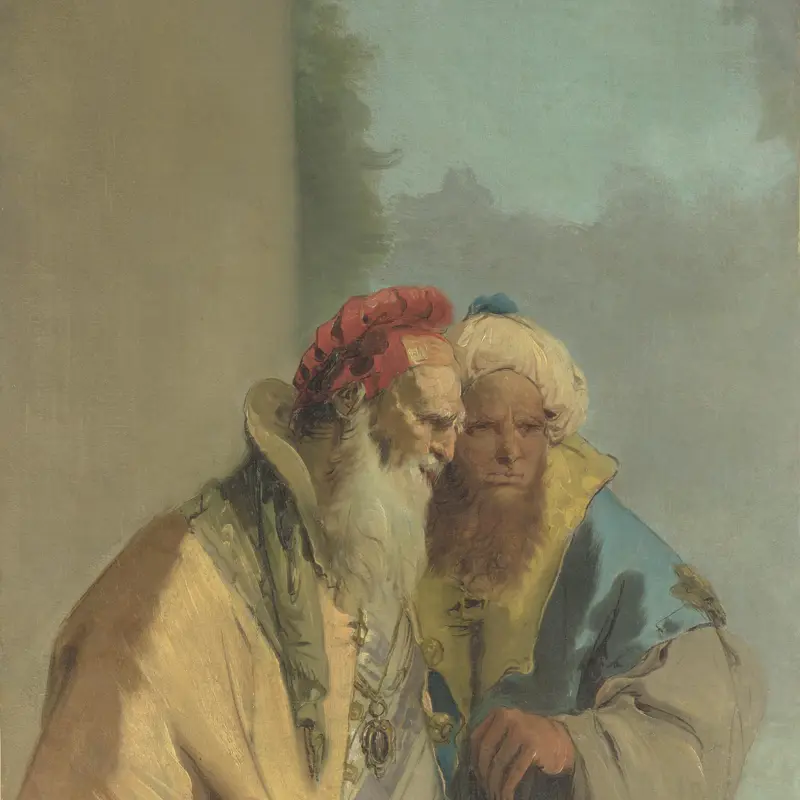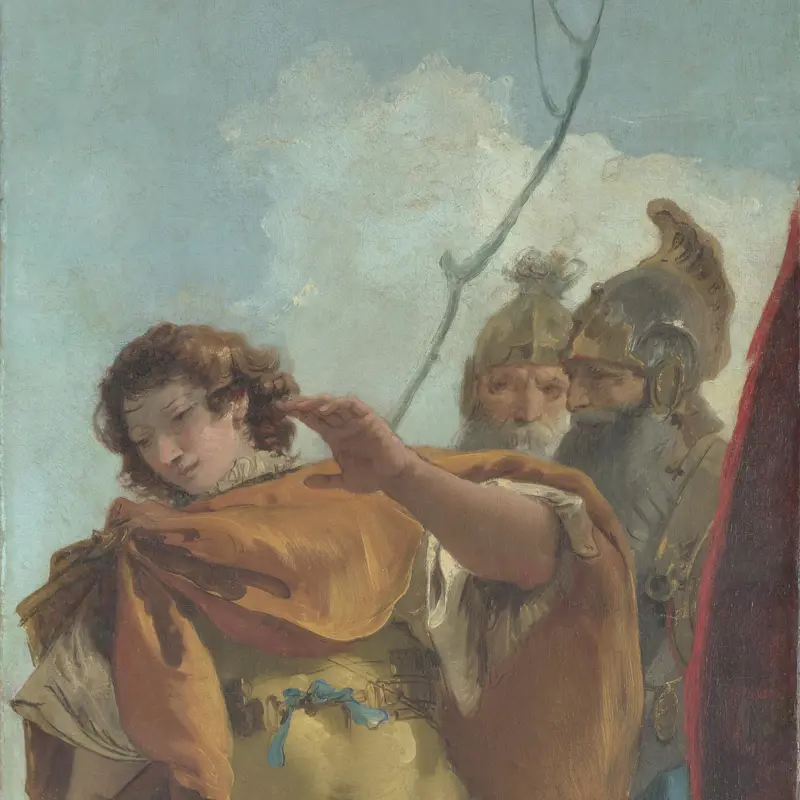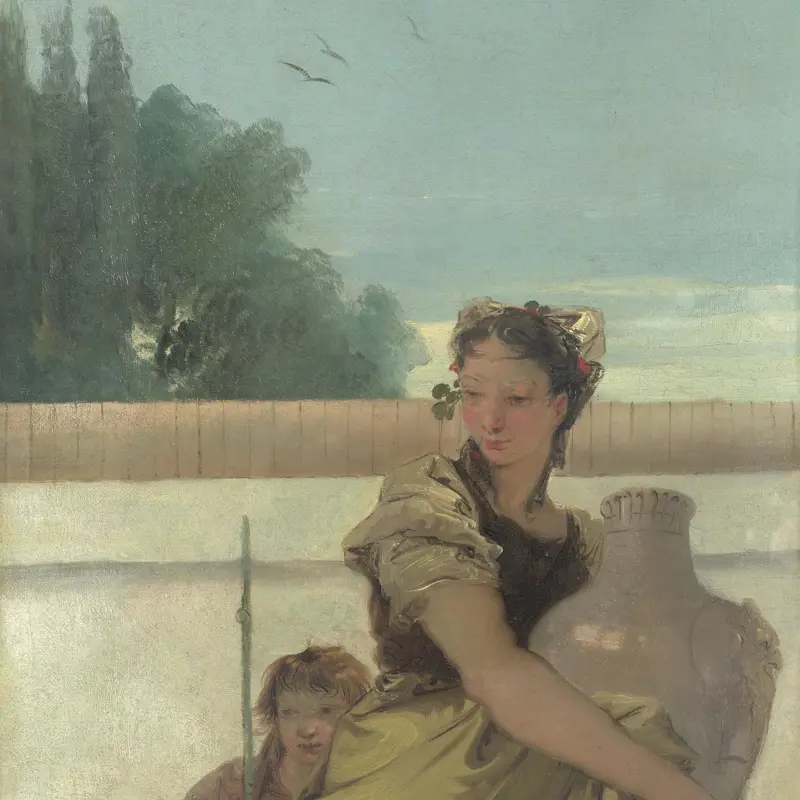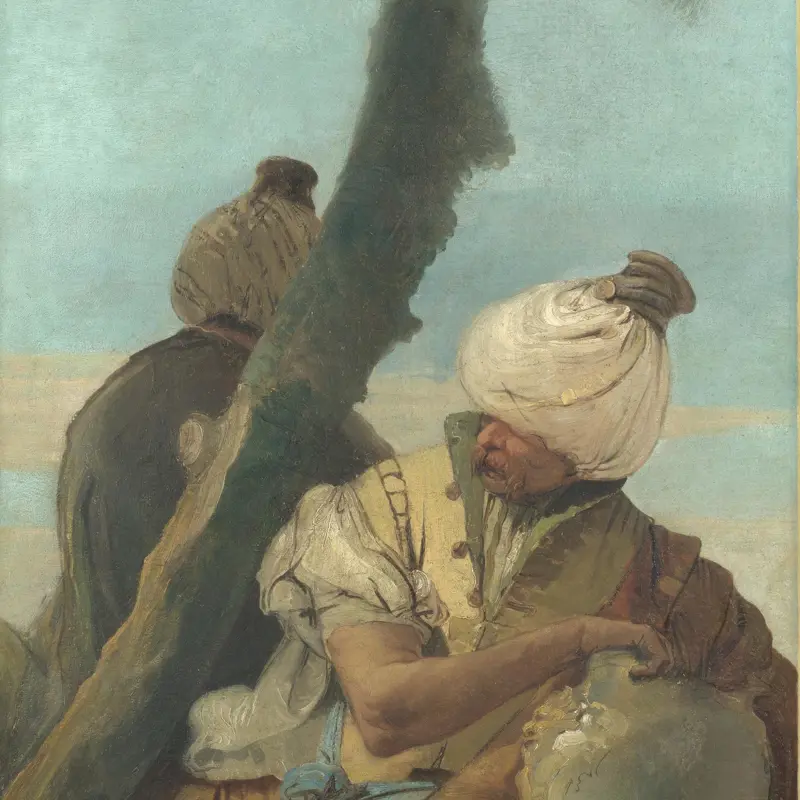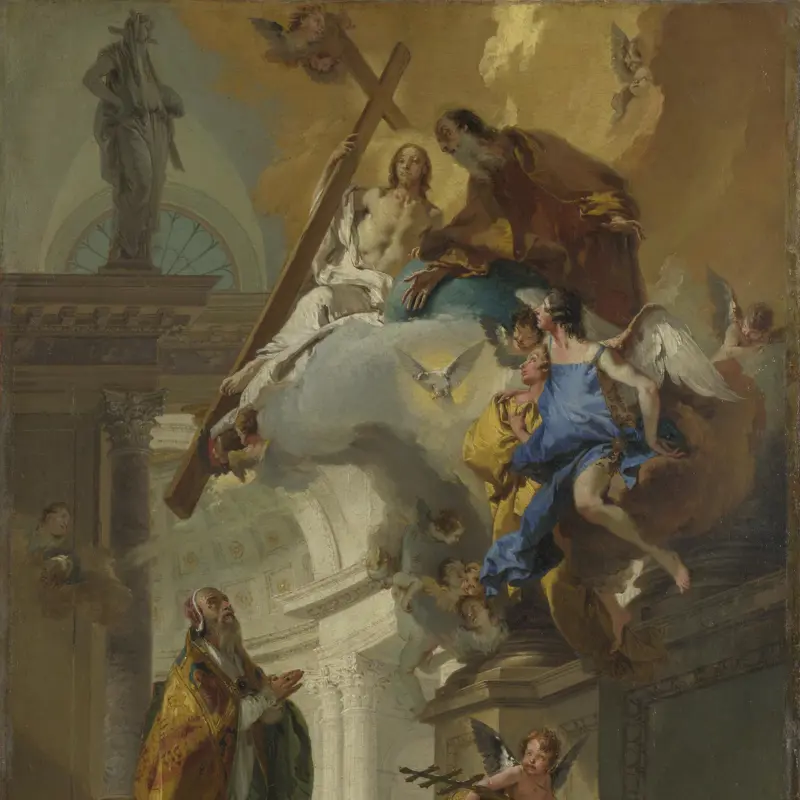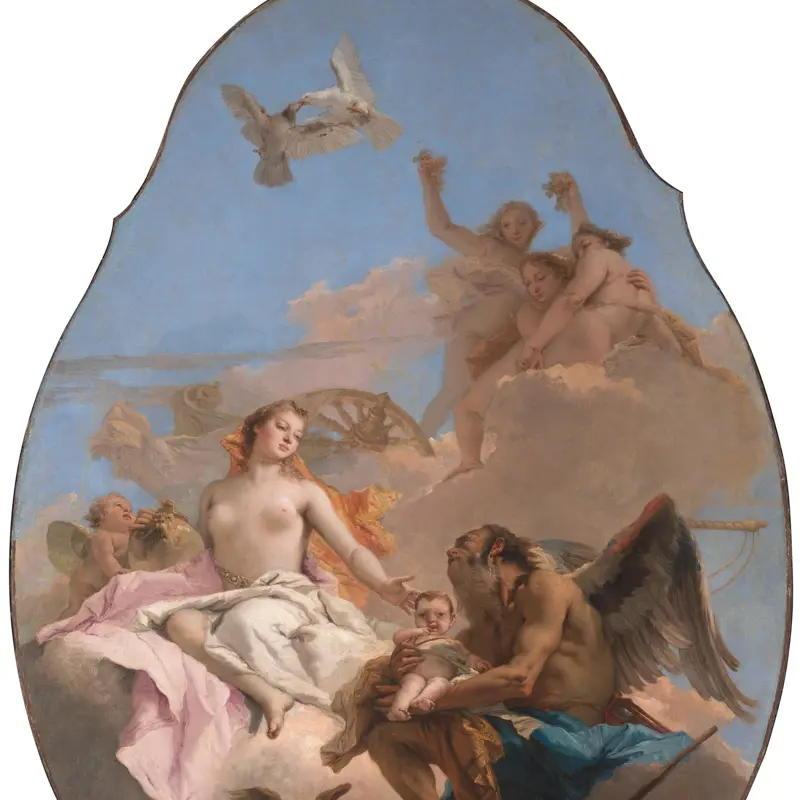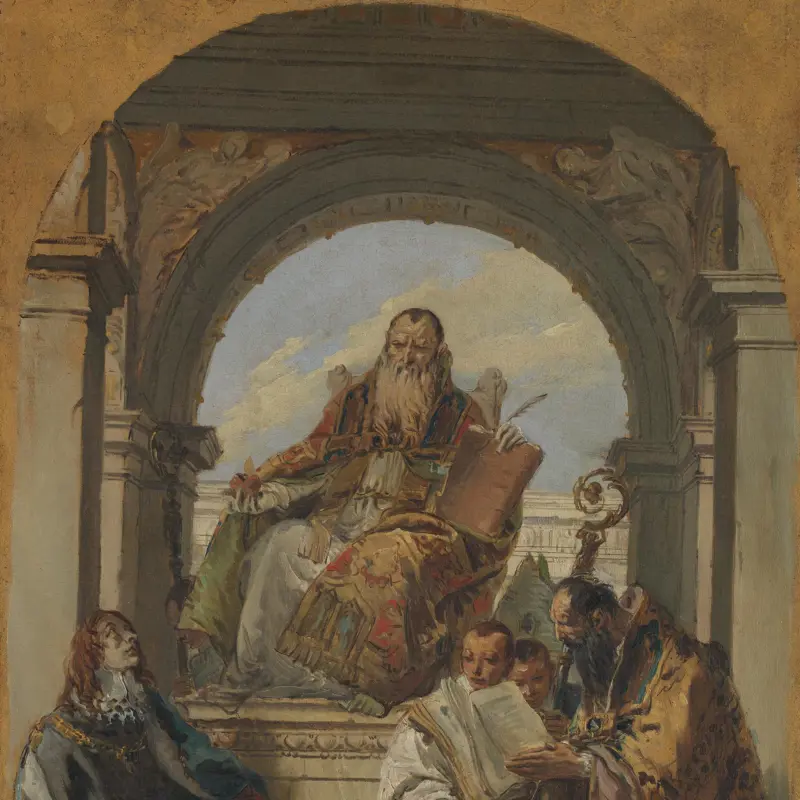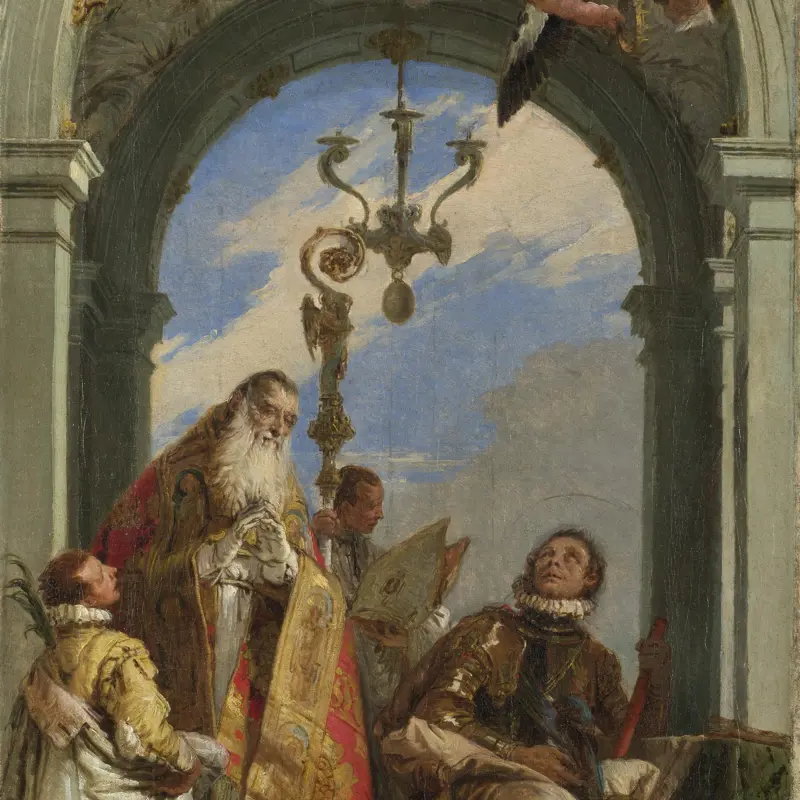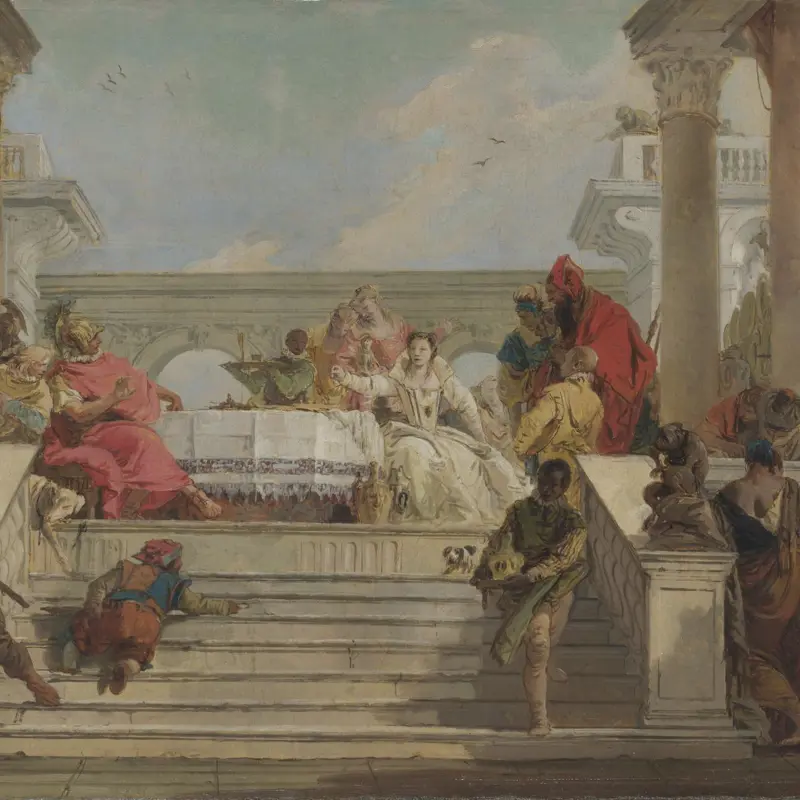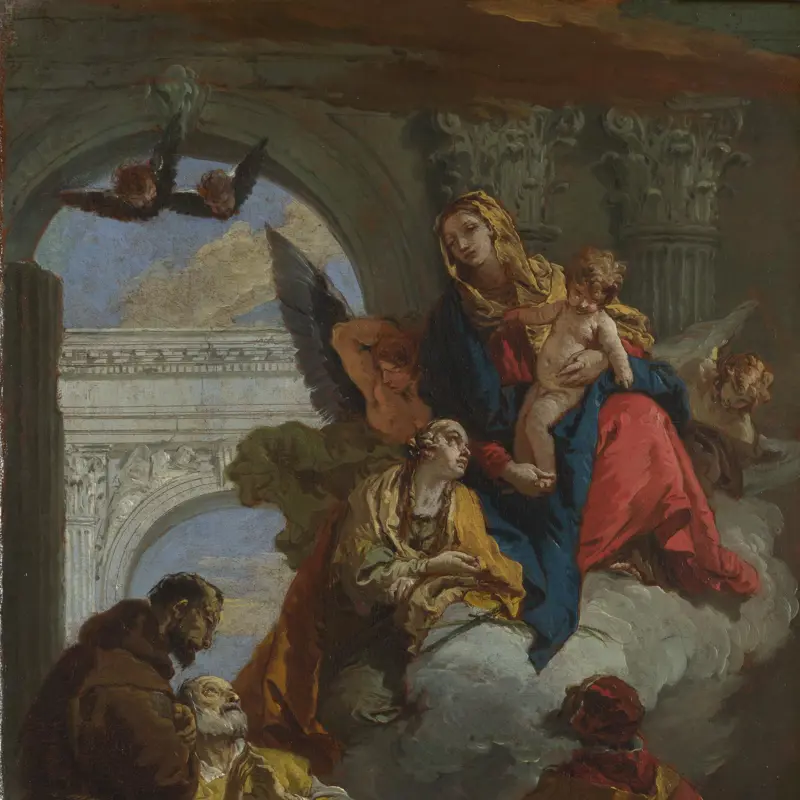Giovanni Battista Tiepolo, 'Seated Man, Woman with Jar, and Boy', about 1740-6
About the work
Overview
Within a walled garden, a man wearing a striking blue costume and ornate necklace catches the gaze of a woman holding a jar. A young boy stands just behind her, carrying a spear. Beyond the wall we glimpse treetops and birds flying across a bright sky.
This picture is part of a series of four paintings that once decorated a room in the Palazzo Cornaro on the Campo San Polo, Venice. The pictures are based on Torquato Tasso’s epic poem Jerusalem Delivered which is set during the First Crusade, a Christian military campaign to recapture Jerusalem from Islamic rule. The poem tells of the ill-fated love between the Saracen sorceress Armida and Rinaldo, a Christian knight. The woman in this scene may represent Armida who, left heartbroken by Rinaldo’s sudden departure, decides to join the fight against the Crusaders. The exotically dressed man sitting at her feet is probably Adrastus, an Indian prince who vows to tear out Rinaldo’s heart to satisfy Armida’s desire for revenge.
The figures’ twisted poses create a sense of movement within the picture, and Tiepolo’s lively brushstrokes add vibrancy to the wonderful fabrics and patterns on display.
Key facts
Details
- Full title
- Seated Man, Woman with Jar, and Boy
- Artist
- Giovanni Battista Tiepolo
- Artist dates
- 1696 - 1770
- Part of the series
- Four Decorative Scenes
- Date made
- About 1740-6
- Medium and support
- Oil on canvas
- Dimensions
- 160.4 × 53.5 cm
- Acquisition credit
- Bought, 1960
- Inventory number
- NG6304
- Location
- Not on display
- Collection
- Main Collection
- Previous owners
Provenance
Additional information
This painting is included in a list of works with incomplete provenance from 1933–1945; for more information see Whereabouts of paintings 1933–1945.
Text extracted from the ‘Provenance’ section of the catalogue entry in Michael Levey, ‘National Gallery Catalogues: The Seventeenth and Eighteenth Century Italian Schools’, London 1986; for further information, see the full catalogue entry.
Bibliography
-
1962The National Gallery, The National Gallery: January 1960 - May 1962, London 1962
-
1986Levey, Michael, National Gallery Catalogues: The Seventeenth and Eighteenth Century Italian Schools, London 1986
-
2001
C. Baker and T. Henry, The National Gallery: Complete Illustrated Catalogue, London 2001
About this record
If you know more about this work or have spotted an error, please contact us. Please note that exhibition histories are listed from 2009 onwards. Bibliographies may not be complete; more comprehensive information is available in the National Gallery Library.
Images
About the series: Four Decorative Scenes
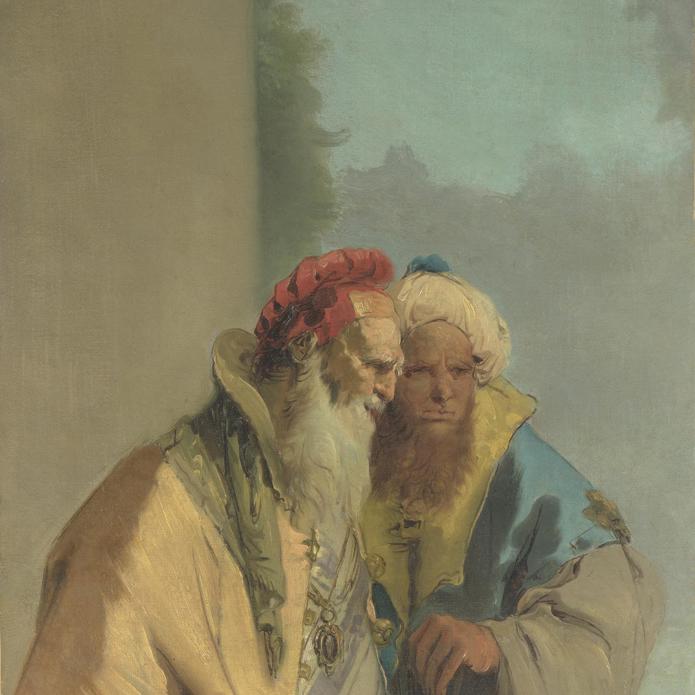
Overview
These four narrow canvases were painted during the 1740s by Giovanni Battista Tiepolo to decorate a room on the second floor of the Palazzo Cornaro on the Campo San Polo, Venice. Tiepolo was enjoying growing fame across Italy at this time; receiving important commissions for large ceiling paintings and wall decorations.
The paintings formed part of a complex decorative scheme, with which a ceiling painting (now in Canberra) and four allegorical figures (now divided between New York and Amsterdam), have been associated. Tiepolo’s four paintings in the National Gallery – Rinaldo turning in Shame from the Magic Shield, Seated Man, Woman with Jar and Boy, Two Standing Figures and Two Men seated under a Tree – are inspired by Torquato Tasso’s popular sixteenth-century poem Jerusalem Delivered. Set during the First Crusade, a Christian military campaign to recapture Jerusalem from Islamic rule, the poem tells of the ill-fated love between the Saracen sorceress Armida and Rinaldo, a Christian knight. Tiepolo’s pale pastel tones and lively brushwork in these scenes create a dazzling atmosphere that evokes the poem’s setting.

